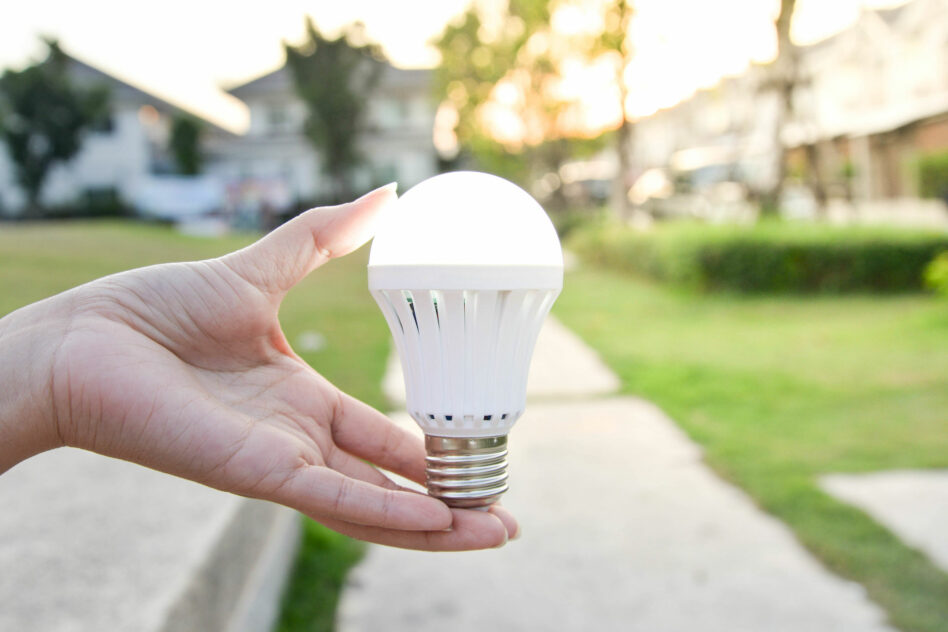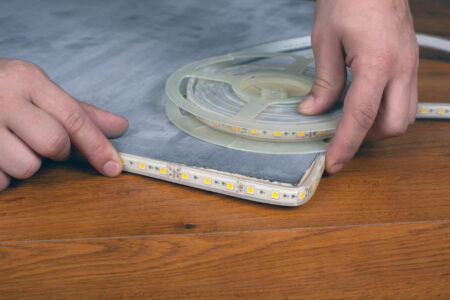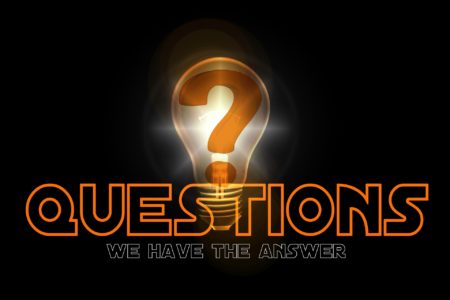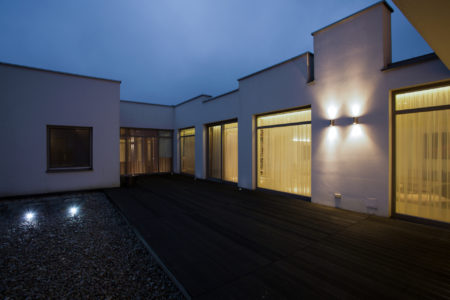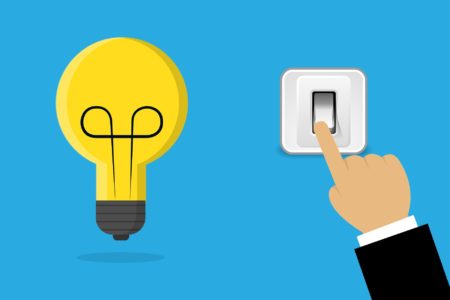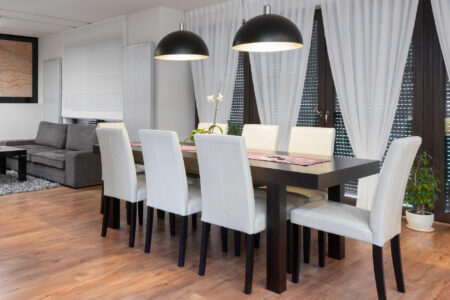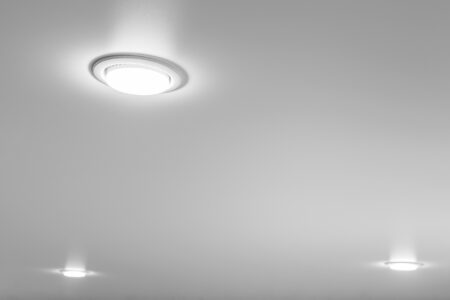There are so many things you need to know first before you go ahead and install a new light bulb in your home or office. For instance, what is an E26 light bulb? How is it any different from an E27 or an E12? Read on to find out!
What Is an E26 Light Bulb?
Essentially, the E26 on your light bulb refers to the lower part of the bulb that threads into the cap instead of being plugged in.
The E26 light bulb bases are some of the most common ones across the USA. You can also see people referring to them as Medium Edison Screws (MES) or “standard” base bulbs.
The letter “E” in its name refers to the Edison screw, the part that threads the bulb in place, and the 26 refers to its diameter in millimeters (26 millimeters is around 1 inch).
Common Light Bulb Bases Explained
Because of how common it is, you might think that you’re holding an E26 light bulb in your hand when you’re really not. There are various other light bulb bases that could be mistaken for an E26, especially the E12 and E27.
Let’s start with the first one, the E12. It’s almost as famous as the E26 and is known as a “Candelabra” bulb. It has a similar screw-in base, but the shape of the bulb itself is different, and the bottom is different too.
Basically, the E26s come in various shapes and styles, but the base size remains the same. If it changes, that means you’re holding something different. Most likely, an E12.
They’re usually elongated and look similar to the, you guessed it, light bulbs you find in Candelabras!
The E refers to the Edison Screw, while the 12 is the size of the base. It’s about half the size of the E26 one, and it’s used chiefly in chandeliers and small decorative light fixtures.
So, what about the E27 one, you might be wondering?
Well, the E27 bulb looks very similar to the E26 bulb, so many homeowners mistakenly believe they’re interchangeable because of their similar appearance. However, that’s not true.
While they may be close in size, each light bulb uses a different amount of voltage. The E27 uses around 240v, while the E26 uses 120v.
That’s because the smaller base of the E26 bulb can’t handle as much power—it can quickly damage the bulb. On the other hand, if you use the E27 bulb with a lower voltage, like 120v, it’ll be half as bright as it could be.
You can differentiate between the two bulbs by looking at their bases. The E26 is slightly smaller than the E27. If you’re unsure, you can refer to the box that the light bulb came in for information.
The E26 Light Bulb Base Vs. A19
Another thing that gets most people confused is when someone refers to an E26 light bulb base as an A19. Funny enough, they’re both one and the same!
The E26 refers to the base, while A19 describes the bulb itself.
The A in “A19” stands for Arbitrary, which is the name of the pear shape that most people recognize. While the 19 refers to its widest point divided by 8 inches—essentially, the size.
Therefore, the A19 is basically an E26, but the letters and numbers are just referring to something else.
The Advantages of E26 Light Bulbs
There are various benefits to using a light bulb with an E26 base that you might know about. Here are some of them:
1. Common
As we mentioned previously, the E26 bulbs are among the most popular types of light bulbs in the USA.
Hence, most lamps and light fixtures throughout the United States have E26 caps for the bulbs. Plus, you can easily find them online or in any local hardware store near you.
They’re also one of the most straightforward bulbs to install, as all you have to do is insert the bulb and twist it around!
2. Secure
Because the E26 bulb bases fit so snugly into the cap, they’re exceptionally secure. As a result, the bulb won’t fall or pop out of place when you move your lamp or fixture around.
This is very convenient if you happen to have any kids or pets at home that always knock stuff off!
3. Durable
Last but not least, the E26 bulbs are incredibly long-lasting due to their screw-in mechanism!
Because the bulb threads inside so tightly, it prevents any sand or debris from getting between it and the cap. So, your light fixture should be fine even if you live in a climate plagued by storms and high winds.
Things to Consider Before Buying an E26 Light Bulb
Unfortunately, simply looking at your light fixture and thinking, “I need a new light bulb,” isn’t sufficient. You’ll need to do some research beforehand.
And luckily for you, we’ve prepared a little list that can help you! All you need to do is the following:
1. Check the Fitting Cap
One of the most important things to remember when purchasing a light bulb is to make sure the cap will fit. There’s absolutely no reason to buy an E26 bulb if the fitting cap is for something else entirely!
You can do this in one of two ways, either by checking the base of the old light bulb you had in place—that’s if you were changing the bulb.
If not, you can take a look at the cap itself if it’s a:
- Bayonet cap, you’ll find two lugs on the side of it that allow you to insert the bulb and twist it to insert
- Screw cap, like the E26 ones we’ve been discussing, you’ll notice that there’s a threaded section that allows you to screw the bulb into place
- Pins cap, you’ll see two holes inside the cap that allow you to insert the pins of a light bulb and twist them into place
Once you’ve figured out the right cap, you can move on to the next step.
2. Determine How Much Light the Space Needs
This step requires you to ask yourself a couple of questions. For instance, what kind of space are you trying to illuminate? Do you need it to be well-lit?
Or perhaps you just want some soft lights to give the room a calm atmosphere?
Either way, you’ll need to check the lumens count on the new light bulb. The more lumens a light bulb has, the brighter it’ll be. Just remember to mainly look for the lumens, not the watts.
That’s because watt is a measurement of how much energy your bulb uses, while lumens tell you how much light is being emitted from a given bulb or fixture. And sadly, many homeowners tend to confuse one for the other.
If you can’t find the lumens of a light bulb, all you have to do is multiply the watts by five times to learn the amount of output you’re getting.
For example, if you’re purchasing a lamp that uses 14 watts of electricity, it’ll produce about 70 lumens. Of course, the higher the number, the more illumination you’ll have.
3. Choose the Color Shade Your Prefer
Besides the luminosity of the bulb you’re getting, there’s another essential aspect to factor in, and that’s the color it’ll produce.
If you’re thinking about getting a pink, blue, or even a red colored bulb, then you can skip this part. However, if you’re getting a regular light bulb, then knowing how much kelvin the bulb has is vital.
A kelvin is a measuring unit that tells you how warm your light will be. For instance, a light bulb with 2000K will give off a soft, candle-like, warm glow.
In contrast, a light bulb with a higher kelvin, like 5000K, will give off a cool, white light.
So if you want to make sure that your bulb can create the kind of ambiance you’re going for, look at the kelvin rating before buying one.
4. Determine the Type of Light Bulb You Need
The last step before purchasing the light bulb is to choose the most practical kind, i.e., a light bulb that’s both illuminating and energy-saving.
This is easily accomplished with one of the Energy Star certified light bulbs. They’re essentially designed to consume less energy and reduce the emissions contributing to climate change.
You can choose any of the following three:
- LEDs
Because they consume almost 90% less than a regular incandescent bulb, LEDs are on top of the list. Though they’re a bit expensive, an LED light bulb can last almost 15 years, saving you a lot of money in the long run.
- Compact fluorescent lamps (CFL)
CFLs are a great option if you’re looking to really brighten up a space. They’re also relatively cheap and don’t consume that much energy. However, CFLs take time after switching on to get fully bright.
- Halogens
These bulbs are very similar to regular incandescents when it comes to color and quality. But most importantly, they’re energy efficient. The only drawback to halogens is that they have a lower lifespan than the previous two options.
